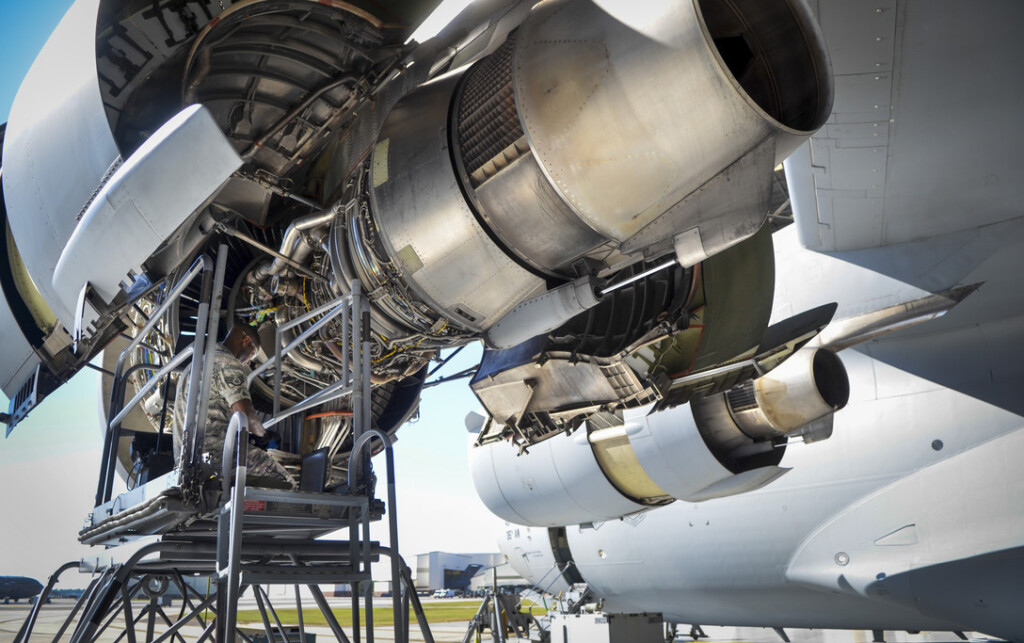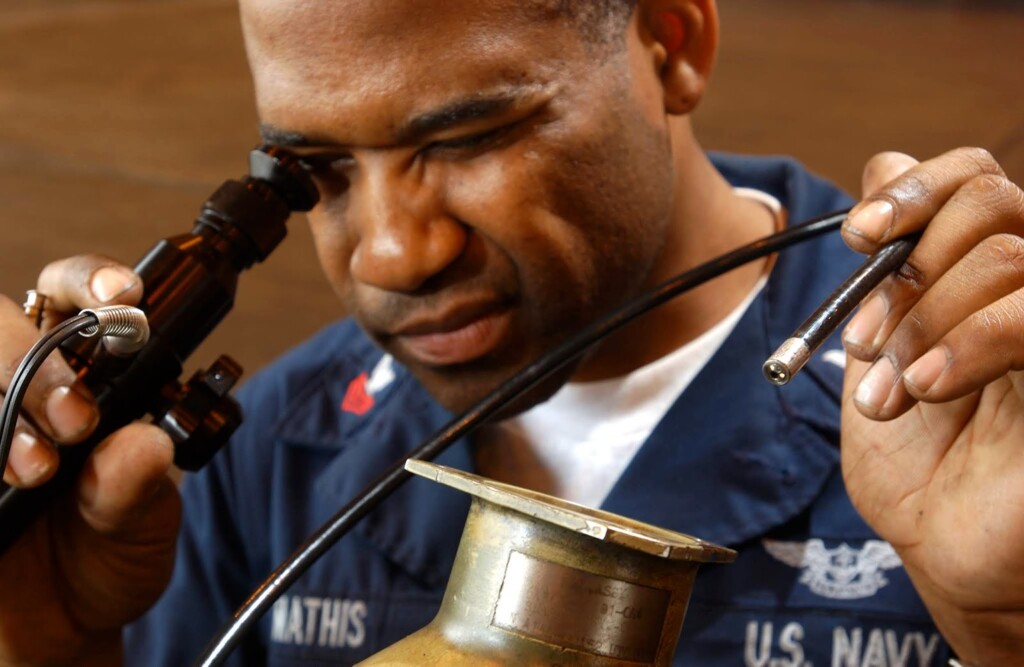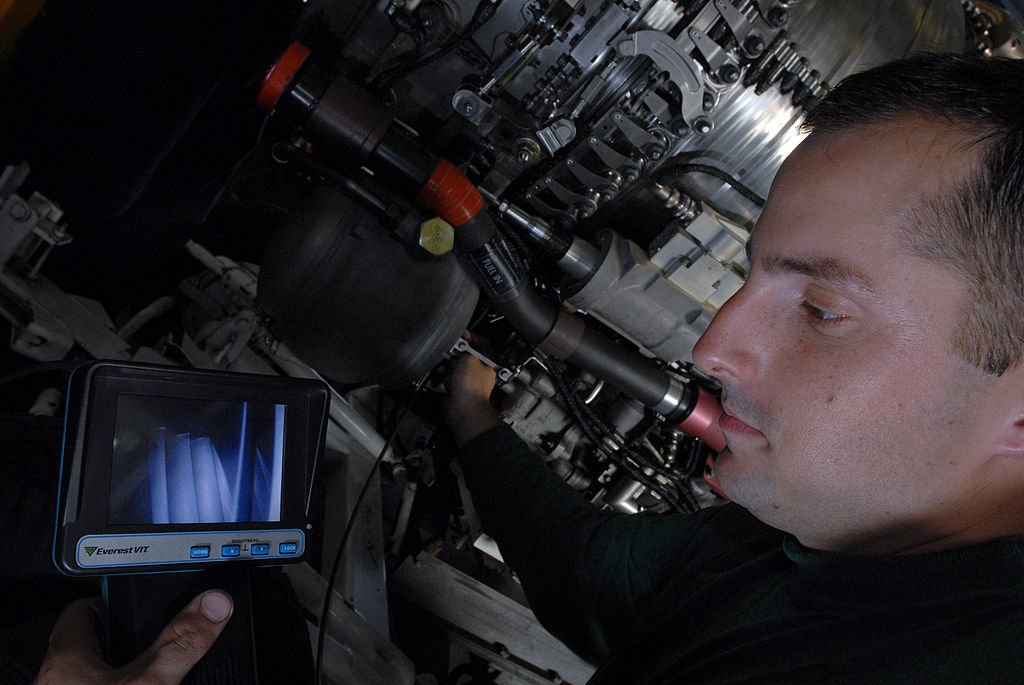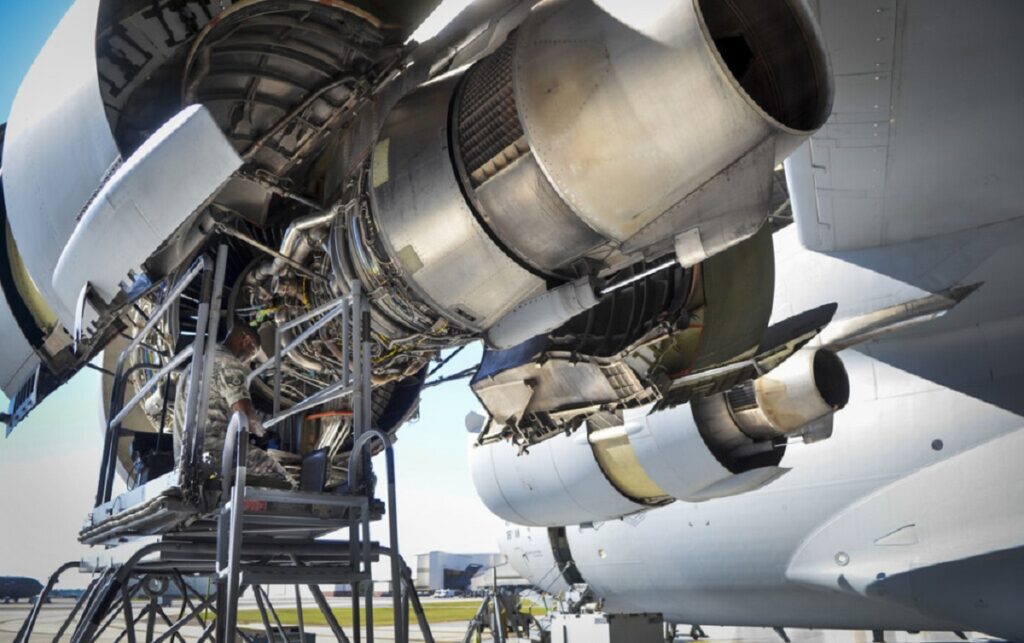
At some of the other point in your life, you must have gone through the word endoscopy. In simple words, the endoscopy of an aircraft engine is known as boroscopy. Let us understand this in a more practical way. A person X is walking on the road and unfortunately, he meets an accident. He was immediately taken to the hospital where the doctor after an investigation found that he has got an injury on his left knee. Now what the doctor can see is an external injury from which a small amount of blood is dripping out!
The doctor carries out the first aid procedure of the injured location. Now X tries to stand on his legs again but he feels immense pain in his knee. Is this pain only due to the external injury? Not exactly there may be some internal injury also. How would the doctor find out what is exactly the matter? The answer that would pop up to your mind is an X-ray test.

Now let us relate this to an aircraft engine, the engine is not producing the thrust as per the standard values, ripping of all the engine components apart and then reassembling just for one problem would take some two-three days. Is this justifiable? In this world SMART activities, this practice is completely against the T.
SMART here means Significant, Measurable, Attainable, Realistic and Time-based.
Here comes our superhero of the night, “BORECOPY”. In simple words, boroscopy is a method of inserting a small camera inside the engine body to get the live image of all the inaccessible components inside the engine on an LCD screen and analyze their actual condition.
Now I think the root cause behind less thrust production can be found out without even opening a single screw.
Basic Components of a Borescope setup
1. Eye Piece or Monitor

This is a simple LCD screen on which the magnified image of the component being viewed is displayed which is termed as a monitor.
An eyepiece is a viewing device in which the magnified image can be seen, the way as it is used in a telescope or a microscope.
2. Optical Flexible cable
This is a system consisting of various components such as relay lenses, rod lens system, fiber optic setup etc. apart from them, there is one component of this system which of our interest a CMOS camera. This is a small camera lens which is fitted at one end of the rigid/flexible cable which goes inside the engine. This camera is special because it has the capability to produce very consistent images despite its very tiny size.
3. Rigid or Flexible cable
This is the cable connecting the eyepiece/LCD screen to the small CMOS camera. This cable can be rigid or flexible based on the work which has to be carried out using the borescope. A rigid cable would restrict the motion of the CMOS camera in linear directions only while the flexible cable can be bent at any orientation to carry out the required work.
4. Light Source
The most important of all is the light source which will illuminate the area under inspection.
How to operate a Borescope
Though we have talked about the working of a borescope the operational procedure of borescope would help us better understand the working of a borescope.
1. The operator would insert the borescope camera end into the engine through various insertion points which are provided on the engine dedicated for borescope inspection only. Apart from the insertion points the holes provided for inserting the spark plugs are also used for this purpose at an average we have 10-15 borescope insertion points for varying according to the models. The small CMOS camera would produce a magnified image on the eye piece/ lcd monitor of the part under observation.

2. After inserting the camera part of the borescope setup the operator would start getting a magnified image of the part under observation on the LCD screen/ eyepiece provided in the setup.
3. Now the operator can simply use his hand to view the different components inside engine such as the turbine blades, compressor blades, combustion chamber etc. Though various SOP(s) are defined for carrying out the borescope inspection but using the borescope in an art and not science. The operator’s efficiency in using borescope would increase with experience.
Pilot after landing flight ABCD at the IGI terminal 3 complaints to the technical department that he felt a certain jerk in engine 2 on the left wing while he was flying over New York. The concerned person of technical department gives these remarks to his team working on that particular engine. The team starts the borescope inspection and inserted borescope camera though port number 9 and finds that there is twisting damage on the turbine blades, they carry out the inspection through all the ports and find out that the twisting damage is present on all the blades of the compressor section also. They give the same input to the data analytics team and after analyzing the flight data they come to know that there was a certain drop in thrust produced by the same engine when it was flying over New York. Hence the team concludes that the damage may be caused due to some sort of birds hit. So in this way boroscopy works.

As the technology is progressing forward, these days companies use boroscopy to inspect the part before and after a certain test run or an experiment so that the before and after conditions of that component can be used to analyze any testing carried out.
So far we have discussed the use of horoscope in the field of aviation only but it used in some other industries such as:· Internal Combustion Engines· Pipes· Heat exchanger tubes· Gearboxes· Welds· Foreign Object Retrieval· Cast Parts· Manufactured or machined parts
Before closing this article I would like to tell you about the three basic engine checks which are carried out according to the situation.
1. The emergency inspection- This inspection is carried out in case of some emergency conditions only such a bird hit etc.
2. Routine inspection- This is carried out on a regular basis to keep a check on engine health no matter how good an engine performing it has to undergo a routine check.
3. The full inspection- This is the inspection in which the complete engine is ripped off in pieces to check each and every component.
To conclude boroscopy is not just the part of the first two checks as it is very easily understandable but it is the part of the third inspection also, no matter the engine is ripped into pieces but there are still some inaccessible locations.
Source – https://www.aircraftnerds.com/






